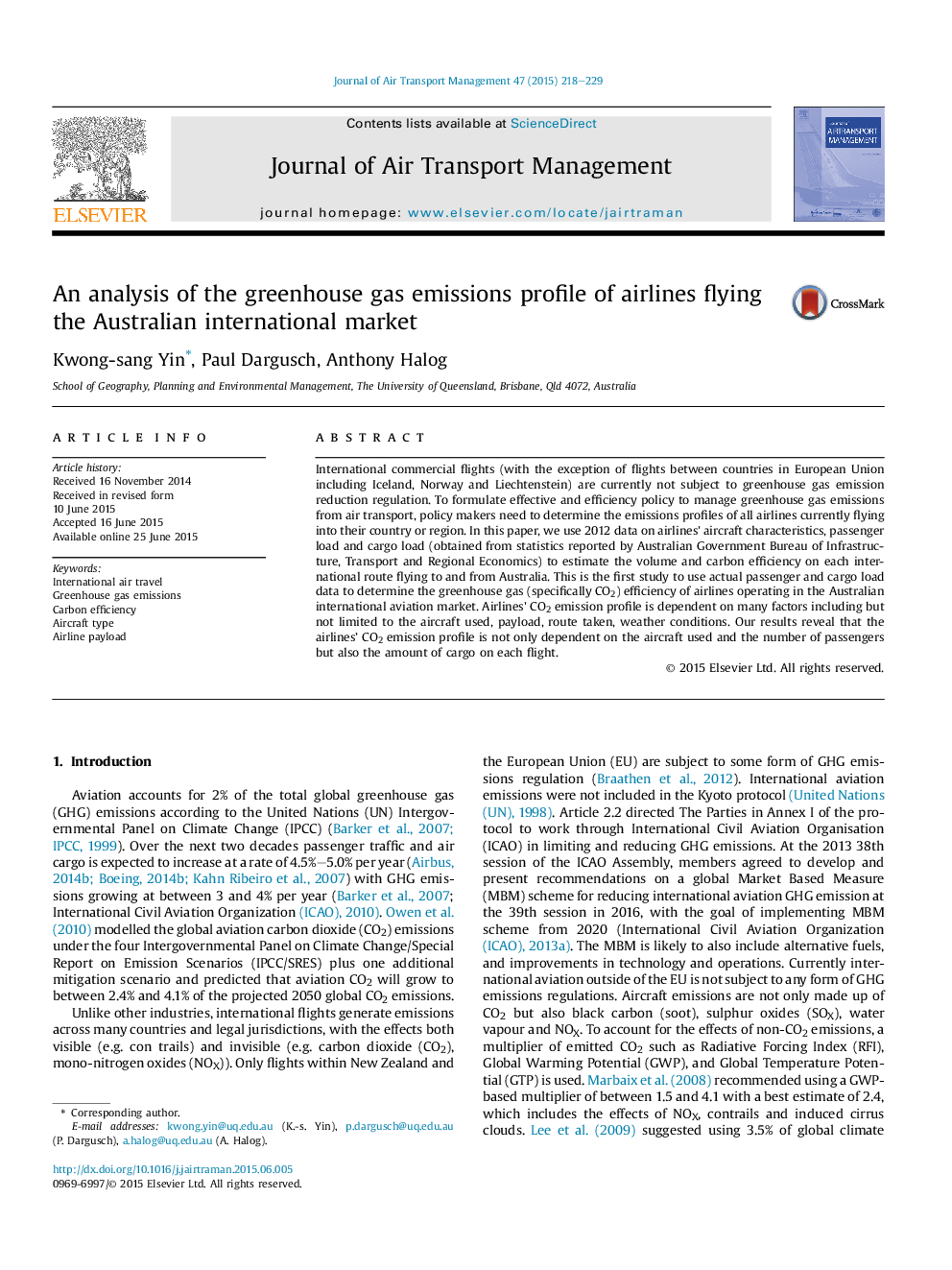| Article ID | Journal | Published Year | Pages | File Type |
|---|---|---|---|---|
| 7435778 | Journal of Air Transport Management | 2015 | 12 Pages |
Abstract
International commercial flights (with the exception of flights between countries in European Union including Iceland, Norway and Liechtenstein) are currently not subject to greenhouse gas emission reduction regulation. To formulate effective and efficiency policy to manage greenhouse gas emissions from air transport, policy makers need to determine the emissions profiles of all airlines currently flying into their country or region. In this paper, we use 2012 data on airlines' aircraft characteristics, passenger load and cargo load (obtained from statistics reported by Australian Government Bureau of Infrastructure, Transport and Regional Economics) to estimate the volume and carbon efficiency on each international route flying to and from Australia. This is the first study to use actual passenger and cargo load data to determine the greenhouse gas (specifically CO2) efficiency of airlines operating in the Australian international aviation market. Airlines' CO2 emission profile is dependent on many factors including but not limited to the aircraft used, payload, route taken, weather conditions. Our results reveal that the airlines' CO2 emission profile is not only dependent on the aircraft used and the number of passengers but also the amount of cargo on each flight.
Related Topics
Social Sciences and Humanities
Business, Management and Accounting
Strategy and Management
Authors
Kwong-sang Yin, Paul Dargusch, Anthony Halog,
